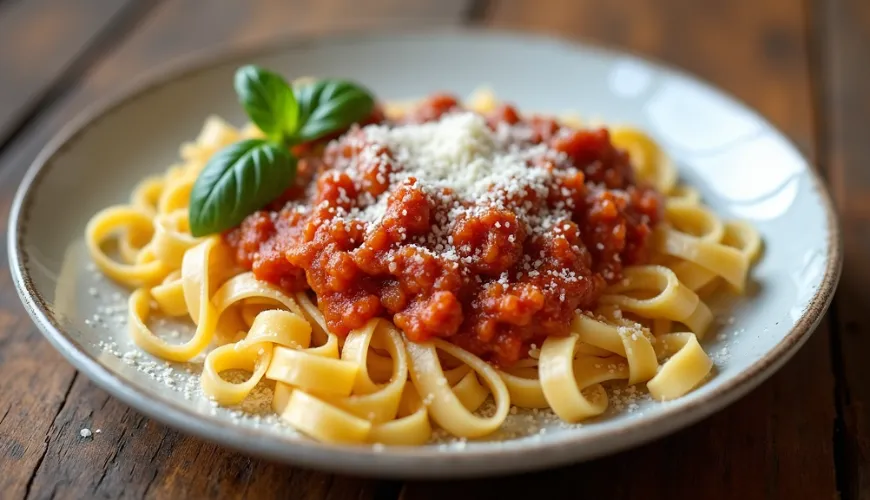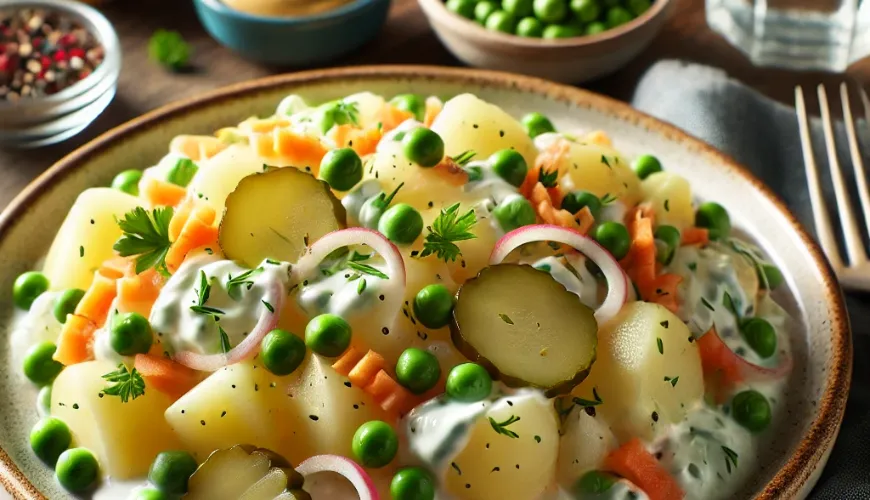
Cook quality Italian pasta using our recipes

The Secret of Authentic Italian Cuisine - How to Prepare Pasta Like in Italy
Italy is a country where food is not just cooked for sustenance – it is a ritual, an art, and an expression of love. And perhaps no other dish represents Italian cuisine as eloquently as pasta. Italian pasta recipes are popular all over the world, but few know what truly gives them their unique character. It's not just about the ingredients, but also about the approach, simplicity, and respect for tradition.
Nowadays, with access to hundreds of types of pasta, sauces, and inspirations from around the world, it seems that home preparation of pasta in the Italian style has never been easier. Yet, there is a big difference between "Italian-inspired" pasta and true Italian pasta according to recipes from Italy – and it is the latter that we should focus on today.
How Italians Perceive Pasta
In Italy, pasta is not eaten as a quick meal from a packet – it is a main course that deserves attention and time. Whether it's creamy tagliatelle with mushrooms, tomato spaghetti al pomodoro, or unforgettable lasagne alla bolognese, one rule always applies: less is more. Italians often use only a few quality ingredients, carefully selected. The key is simplicity, freshness, and harmony of flavors.
In one Italian family in Parma, where pasta has been made for generations, everyone remembers their role. Grandma mixes the dough, the mother rolls the pasta into thin sheets, and the children help cut and shape. Such moments are not just about food – they are about spending time together, passing on traditions, and sharing joy. And that is why Italian pasta recipes are so special.
Homemade Tagliatelle – The Queen of Pasta
When talking about the recipe for Italian tagliatelle, most gourmets imagine fresh egg pasta served with a rich ragù sauce. But the secret of this classic starts with the pasta itself. Traditionally, they are made only from type 00 flour and fresh eggs. No water, no oil – the dough should be firm, elastic, and smooth. It is rolled into a thin sheet and cut into noodles approximately 6–8 mm wide.
For the sauce, a mixture of minced beef, pancetta, onion, carrot, celery, tomato paste, red wine, and long cooking is used. The original ragù alla bolognese recipe was even registered in the Bologna Chamber of Commerce in 1982. And although many think that this ragù is served with spaghetti, Italians would correct you: "No, it's properly served with tagliatelle.”
The Best Italian Pasta Sauces? Tomato, Creamy, and Pesto
Italian pasta sauces form a special chapter – each region of Italy has its own variations and specialties. In Liguria, pesto alla genovese leads, a combination of basil, pine nuts, parmesan, and olive oil, served with trofie or linguine. In Naples, a simple sauce of crushed tomatoes, garlic, and olive oil reigns – ideal with penne or spaghetti. In Rome, they favor a combination of pancetta, egg, and pecorino cheese in carbonara, although it is often incorrectly made with cream worldwide today.
Among classic Italian sauce recipes is arrabbiata (spicy tomato sauce with garlic and chili), amatriciana (tomato with guanciale and pecorino), or cacio e pepe – the magic of simplicity with pepper and sheep cheese. Interestingly, Italians often match the sauce according to the type of pasta – short hollow pasta for thicker sauces, long for more liquid ones.
And what is important? The sauce should never overpower the pasta but complement it. Properly cooked pasta should be "al dente", that is, to the bite, and should never swim in sauce. The connection between pasta and sauce should be harmonious – like a dance between two partners.
Why Homemade Pasta is Different from Store-Bought
Many people think that making pasta at home is unnecessary when it can be bought in the store. The truth is, fresh homemade pasta tastes completely different – it is softer, more pliable, and better absorbs the flavor of the sauce. Italian homemade pasta recipes often start with simple dough, but the result is incomparable.
For example, when making homemade ravioli, not only does the whole family get involved, but you can fill them with anything – from ricotta with spinach to pumpkin or mushrooms. In every bite, there is the taste of effort, tradition, and creativity. And that is what sets homemade Italian pasta apart from those on the supermarket shelf.
Tips on How to Cook Pasta Like a True Italian
If you want to bring your home cooking closer to the Italian one, it's worth mastering a few basic rules. Here is a small list to help you cook pasta with heart and mind:
- Use quality ingredients – semolina pasta, extra virgin olive oil, real parmesan.
- Always salt the pasta cooking water well – it should taste like the sea.
- Never rinse pasta with water after cooking – it will lose starch, which helps the sauce adhere.
- Keep some of the pasta water – it will excellently smooth the sauce.
- Finish cooking the pasta in the sauce – let it simmer together for a while so the flavors meld.
A quote from the famous Italian chef Massimo Bottura says: "Respect for ingredients is the foundation of good cuisine." And that is the magic of Italian pasta – in reverence for simplicity, taste, and tradition.
Living Heritage and Modern Interpretation
Today's times favor experiments, and even Italian chefs are not afraid of innovations. New versions of traditional recipes, gluten-free variants, vegan sauces, or combinations with unconventional vegetables are emerging. Yet the core remains the same: quality pasta, simple ingredients, and love for food.
So while in one kitchen in southern Italy, a grandmother is preparing gnocchi according to her mother's recipe, in another part of the world, a young food blogger is combining tagliatelle with roasted pumpkin and sage. Both, however, share the same enthusiasm – to cook meaningfully, deliciously, and with respect for tradition.
Try next time to prepare Italian pasta according to true recipes, maybe homemade tagliatelle with a simple tomato and basil sauce. You might find that even on an ordinary day, you can experience a piece of Italy – just light a candle, grate some parmesan, and invite your loved ones to the table.

